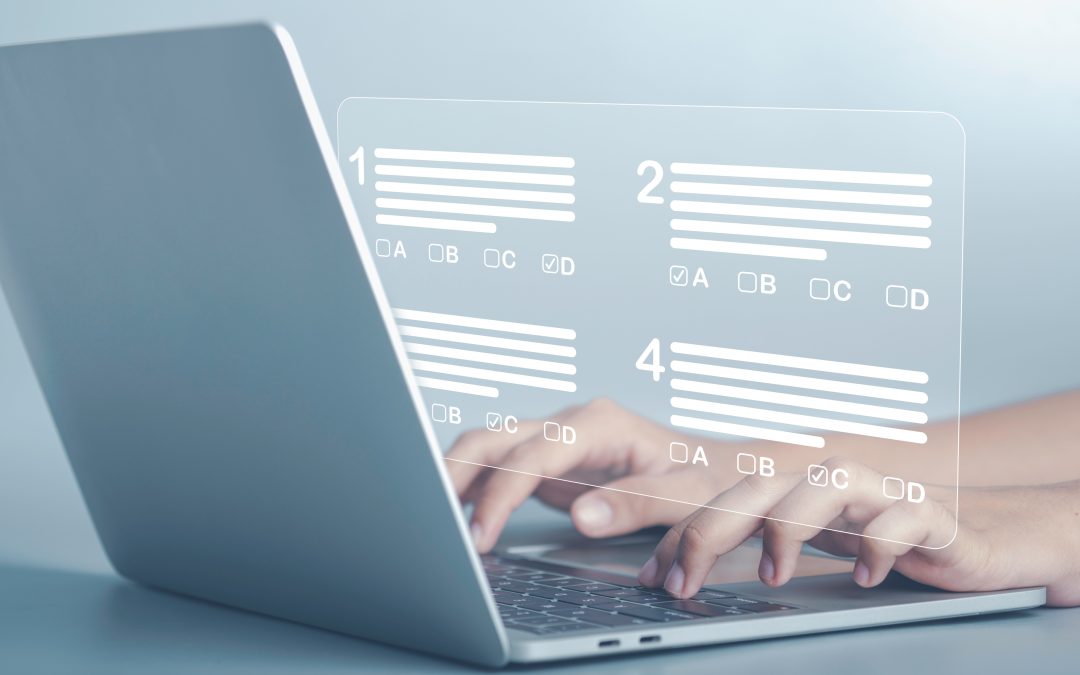One of the ongoing changes since the pandemic is the continued integration of virtual and digital elements into academic life. I spoke to Morris Kohanfars, who works at the test preparation company ArborBridge, to learn more about the upcoming shift to a digital version of the SATs.
“During Covid, the SAT and ACTs (in the US at least) were still paper-based, not online,” Kohanfars told me, which caused major issues for the exams’ widespread accessibility. “Even when some Covid restrictions were lifted, there were still widespread cancellations at test centers across the world as a result of Covid.” Many colleges were already considering a test-optional policy as part of a more holistic application review process, but the pandemic accelerated that process and the digital SAT technology was developed more quickly out of necessity. Test centers were shut down and many students had limited access to testing, so most colleges collectively made the decision to go to a test-optional optional format.
Many colleges are continuing this policy, though students can still submit their exam scores as part of their profile if they so choose. Scores are typically required for some of the more competitive degree programs, and a few colleges, such as MIT, have gone back to requiring test scores for all their applicants. Though students are again able to take their SATs in person, the College Board is continuing with their digital exam program.
In the fall of 2023, digital PSATs will be offered to high school juniors, which will allow students to familiarize themselves with the tests as well as account for any remaining glitches in the system. Between the digital PSATs and the successful international trial runs of the digital SATs, students in the United States should be ready to make the switch to the digital SAT program by the spring of 2024. The digital SATs have already gone through successful trial runs internationally.
Here is a brief overview of what to expect with the new digital SATs.
The basics
Digital SATs are proctored in the same manner as paper ones: students go to their testing locations and complete their exams in person under the supervision of an education professional. The difference is that students will be expected to bring their own fully-charged personal laptop with the official test-taking application, Bluebook, already installed on it in order to take the digital SATs. If a student doesn’t have access to their own laptop, one will be provided to them by the testing site if they indicate their need when initially signing up to take the exam. “If they walk into the testing site without a laptop, they will not necessarily be given one,” says Kohanfars. “Requests for laptops must be given in advance of the test date.”
Why go digital?
Simply put, a digital program streamlines the entire exam-taking process. The paper exams must be printed, shipped to all testing locations, then repacked and shipped back to be scored. Sometimes portions of the SAT are leaked online, which can force entire classes of students to retake their exams. Paper exams can even be misplaced completely by accident! The digital SAT will allow for more security for students and educators and for the College Board.
Not only is the digital SAT more logistically efficient, it is also easier to take, both in terms of the exam’s length and the amount of reading time required. For the reading comprehension section, students will no longer have to read several paragraphs at once before answering multiple questions about the same text. Instead, reading comprehension will involve individual questions about much shorter excerpts.
The digital SAT also accounts for issues of plagiarism by providing students at the same testing site with different versions of the exam. The Bluebook app is designed to prevent users from accessing any other programs on their computer while the exam is in progress.
Adaptive exams
An extremely important distinction of the digital SAT is that the exam was created to be adaptive, which means that it responds in real time to each student’s performance, as opposed to a linear exam, which remains the same regardless of how well the student is doing. If a student struggles in the first part, or module, of the exam, the next module will contain easier questions; if a student does well on the first module, the next one will contain more challenging questions. After that, each student is “locked in” to either the easier or more difficult version of the exam. However, it is essential to note that the easier track is equivalent to fewer points. As a result, students who end up on the easier track are very unlikely to score above a 600 on that exam section, even if they answer all of the remaining questions in the module correctly.
How to study for the digital SATs
College Board offers free practice digital SAT exams through the Bluebook application, which can be downloaded online. They also encourage students to take the digital PSATs in the fall so they are familiar with the technology as well as the content of the exams. On the College Board website they offer a number of other resources for exam practice and more sample questions.
It is more than likely that College Board will shift to a 100% digital exam suite, including APs, after this upcoming exam season. Other companies such as ACT will likely follow suit.
Like any change, the digital SATs will require an adjustment period. However, the hope is that this new system will streamline the exam process and be an improvement for everyone involved.

